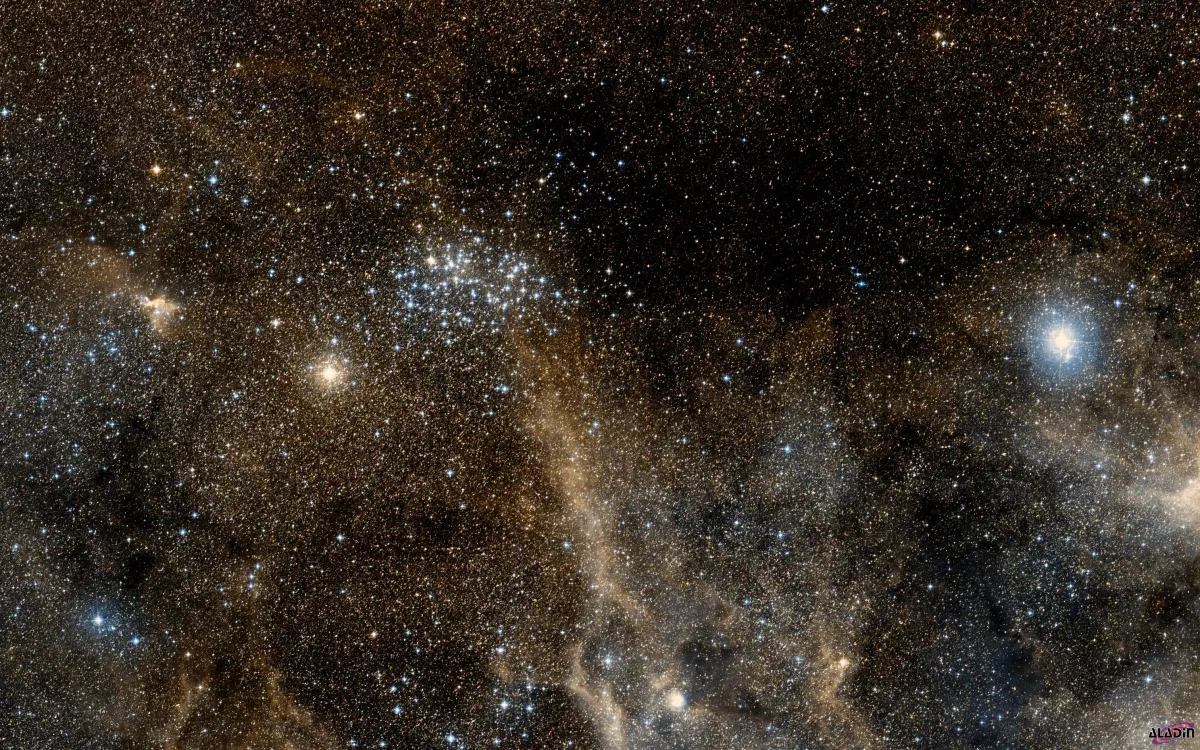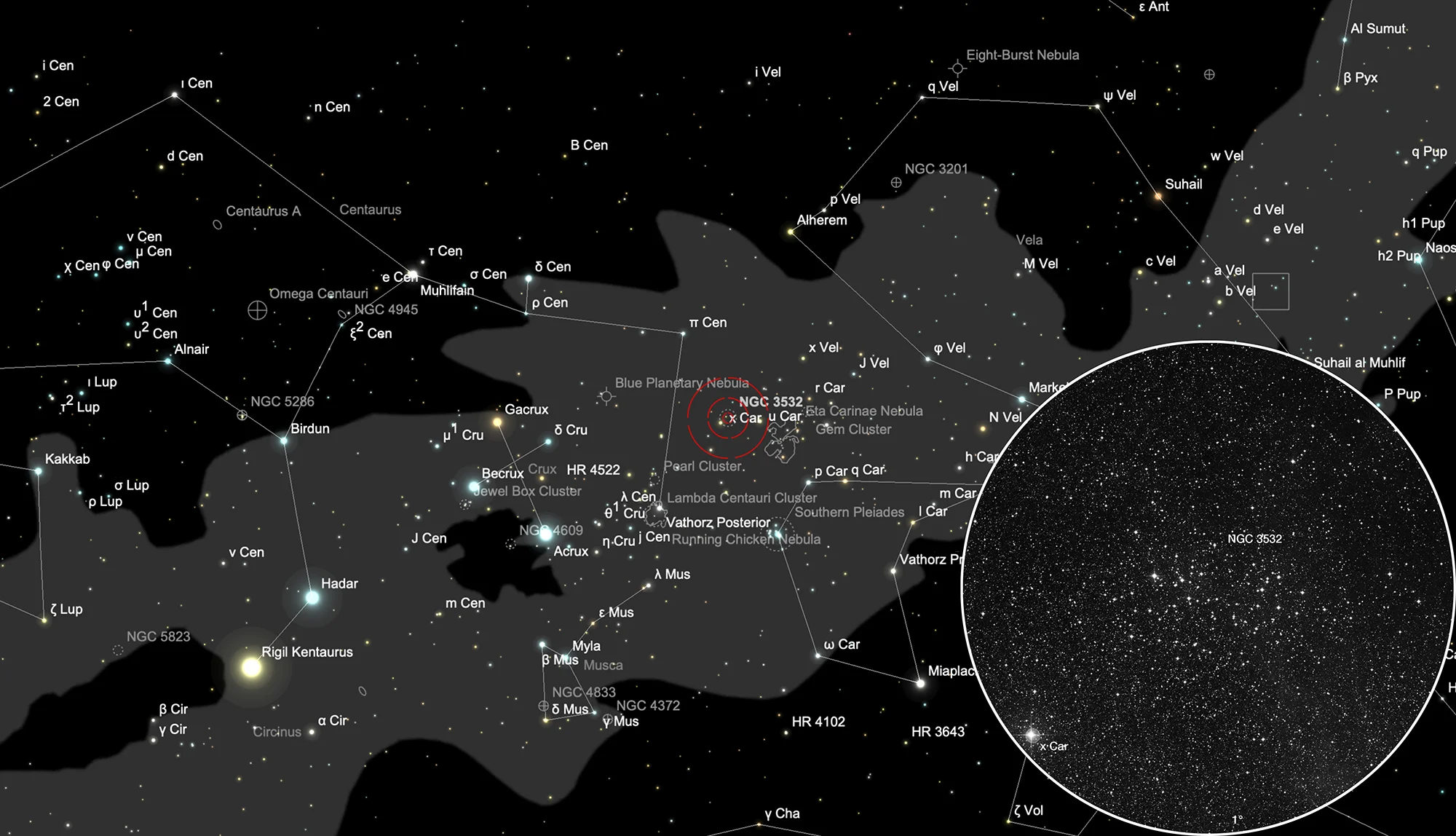Open Cluster NGC 3532

History
Nicholas-Louis de Lacaille (also: de la Caille) observed the cluster in 1751-1752 with a ½" telescope at 8x during his expedition to the Cape of Good Hope. He classified it as a nebulous cluster of stars and noted: «A prodigious cluster of small, tightly-packed stars, filling the shape of a semi-circle 20 to 25 minutes in diameter.» [8]
James Dunlop observed the cluster three times in 1826-1827 using his 9-inch reflecting telescope at his home in Parramatta (NSW) in Australia. He listed the cluster as Δ 323 and noted: «(5 Centauri, Bode) is a very large cluster of stars about the 9th magnitude, with a red star of the 7-8th magnitude, north following the centre of the cluster. Elliptical figure: the stars are pretty regularly scattered.» [50]
John Herschel listed the cluster as h 3315 and observed it four times using his 18.3-inch reflector at South Africa. Sweep 434 (31 March 1834): «Chief star of a very large, round, loosely scattered cluster of stars 8...12 magnitudes, which fills 2 or 3 fields. A fine bright object.» Sweep 435 (1 April 1834): «The chief star of a superb cluster, which has several elegant double stars, and many orange-coloured ones.» Sweep 543 (4 February 1835): «A glorious cluster of immense magnitude, being at least 2 fields in extent every way. The stars are 8, 9, 10, and 11 mag, but chiefly 10 mag, of which there must be at least 200. It is most brilliant object of the kind I have ever seen.» [11]
Physical Properties
| Designation | NGC 3532 |
| Type | OCL (II1m) |
| Right Ascension (J2000.0) | 11h 05m 40.0s |
| Declination (J2000.0) | -58° 44' 00" |
| Diameter | 50 arcmin |
| Photographic (blue) magnitude | 3.2 mag |
| Visual magnitude | 3.0 mag |
| Metric Distance | 0.497 kpc |
| Dreyer Description | !!, Cl, eL, R, lC, st 8…12 |
| Identification, Remarks | h 3315; GC 2308; OCL 839; ESO 128-SC31 |
Finder Chart
The open cluster NGC 3532 is located in the constellation Carina. Unfortunately it is not visible from Europe. On 6 March it in opposition with the Sun and is therefore highest in the sky at local midnight.
